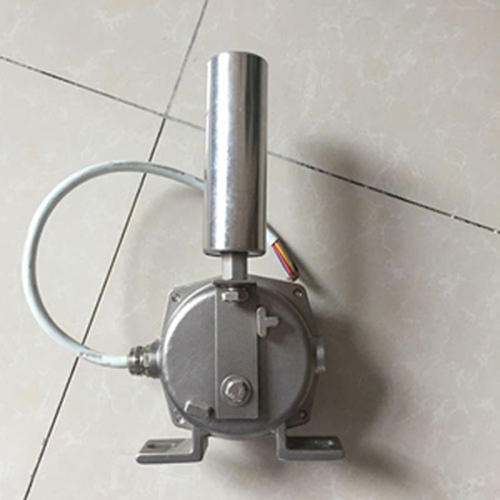
Product Overview:The DPP-EH/GS two-stage deviation switch is a high-performance detection device designed specifically for conveyor systems. This switch has a two-level alarm function, which can accurately detect the deviation of the conveyor belt and provide reliable alarm and control signals, suitable for belt conveyor systems in various industrial environments.
Main features:
Two level alarm functionProvide two-level alarm signals based on the degree of deviation:
High sensitivity detectionDPP-EH/GS is equipped with highly sensitive sensors that can accurately detect the offset of the conveyor belt at different operating speeds and loads.
durableMade of durable materials and designed for use in high dust, high humidity, and other harsh environments.
Easy to installReasonable design, supports flexible installation, and can adjust different conveyor models and configurations.
Protection levelHaving a good level of protection ensures reliable operation of equipment in industrial environments.
Technical parameters:
working principle:The DPP-EH/GS two-stage deviation switch uses its sensitive sensors to detect the deviation of the conveyor belt. When the conveyor belt deviates beyond the preset angle range, the switch will issue the following alarm signals based on the degree of deviation:
Installation and Debugging:
Maintenance and upkeep:
Safety precautions:
Troubleshooting:
For more detailed information or technical support, please refer to the product manual or contact the supplier.
1. How to adjust the detection angle of the DPP-EH/GS two-stage deviation switch?
Adjusting the detection angle of the DPP-EH/GS two-stage deviation switch usually requires following the guidance in the product manual. The steps are as follows:
Positioning adjustment device: Find the angle adjustment screw or knob on the switch, which is usually located on the side or front of the switch.
Adjust angle: Use a suitable tool (such as a screwdriver) to slightly rotate the adjustment device and set the desired detection angle. According to the actual operation of the conveyor belt, set the offset angle for the first level alarm (e.g. 15 °) and the offset angle for the second level alarm (e.g. 30 °).
Test confirmation: After installation and adjustment, conduct a simulation test to ensure that the switch can accurately trigger the corresponding alarm signal when it detects an offset.
2. How to deal with problems in high dust or humid environments with DPP-EH/GS deviation switch?
When using the DPP-EH/GS deviation switch in high dust or humid environments, the following measures can be taken to ensure its normal operation:
Choose a switch with appropriate protection level: Ensure that the selected switch has sufficient protection level (such as IP65 or higher) to resist the intrusion of dust and moisture.
Regular cleaning: Regularly clean the casing and sensors of the switch to remove accumulated dust and dirt, in order to prevent affecting detection accuracy. Use appropriate cleaning tools and methods to avoid damaging the switch.
Check sealing: Regularly check the sealing of the switch to ensure that all seals and protective covers are in good condition to prevent moisture or dust from entering the interior.
Installation location selection: Choose an appropriate installation location to avoid direct exposure to extreme humidity or high dust environments. If necessary, a protective cover or dust cover can be installed.